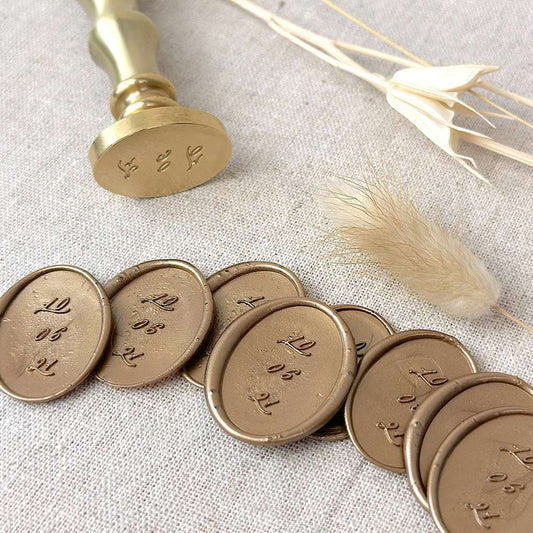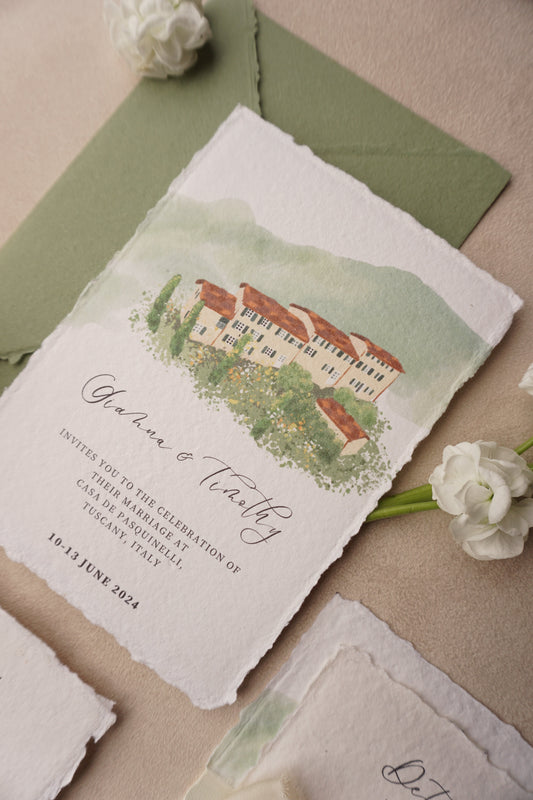The Artistry of Handmade Paper: Exploring the Sustainable, Beautiful, and Timeless Craft
Step into a world where creativity knows no bounds, where sustainable practices intertwine with timeless beauty, and where a delicate sheet of handmade paper becomes a canvas for unbridled artistry.
In this article, we delve into the captivating realm of handmade paper, a craft that has stood the test of time and continues to enchant enthusiasts worldwide.Handmade paper, often crafted using ancient techniques passed down through generations, is more than just a medium for art; it is a symbol of sustainability and craftsmanship.
With a rich history dating back centuries, this age-old practice embraces eco-friendly materials and methods, creating a connection between nature and the artist's vision.Each sheet of handmade paper is a testament to the artisan's expertise and attention to detail. The fibers, meticulously sourced from natural ingredients, are transformed into delicate works of art that carry both a unique texture and a story. Whether adorned with intricate paintings or used as a backdrop for calligraphy, handmade paper holds a certain charm that mass-produced alternatives simply cannot replicate.Join us as we explore the artistry of handmade paper and dive into the world of sustainable, beautiful, and timeless craftsmanship.
Discover the stories behind the creation of these exquisite sheets and gain a deep appreciation for this venerable tradition that continues to inspire creatives worldwide.

BLUSH HANDMADE PAPER

WHITE HANDMADE PAPER

CLAY HANDMADE PAPER

BLUSH HANDMADE PAPER

WHITE HANDMADE PAPER

CLAY HANDMADE PAPER

BLUSH HANDMADE PAPER

WHITE HANDMADE PAPER

CLAY HANDMADE PAPER
History and Significance of Handmade Paper
The history of handmade paper dates back to ancient China around 105 AD, credited to the eunuch Cai Lun. Initially crafted from mulberry bark, hemp, and rags, this innovation revolutionized communication and record-keeping.
The technique spread through trade routes, reaching Japan and eventually Europe, where it became integral to the development of literature and art. Each region adapted the methods to suit local materials and cultural nuances, enriching the craft's diversity and significance.As paper became more accessible, it transformed education, literature, and artistic expression. The Renaissance period saw a flourishing of artistic endeavors, with handmade paper serving as the foundation for countless masterpieces.
Artists like Albrecht Dürer and Rembrandt relied on high-quality paper to create their iconic works. The tactile nature of handmade sheets allowed for a unique interaction between the artist's medium and the intended audience, fostering a connection that mass-produced paper simply could not provide.In many cultures, handmade paper holds historical significance beyond its practical uses. It often embodies traditions, rituals, and artistic practices passed down through generations.
For instance, in India, handmade paper is not only a craft but also a vital part of cultural heritage, utilized in religious texts and ceremonial items. The stories and techniques embedded in each sheet reflect a rich tapestry of human experience, making handmade paper a fascinating subject of study and appreciation.
The Process of Making Handmade Paper
The art of making handmade paper is a meticulous process that combines skill, patience, and creativity. It begins with the selection of raw materials, which can include cotton, linen, mulberry bark, or even recycled paper. Each type of fiber offers unique textures and characteristics, influencing the final product. After sourcing the materials, they undergo a thorough cleansing process to remove impurities, followed by soaking, which softens the fibers and prepares them for pulping.
Once prepared, the fibers are beaten into a pulp, either by hand or with the help of a mechanical beater. This stage is crucial, as the degree of beating affects the paper's texture and strength. A fine pulp creates smoother sheets, while a coarser pulp lends a more rustic feel. The pulp is then diluted in water and poured into a mold, typically made of a wooden frame covered with a fine mesh. This step is where the magic happens, as the pulp settles and forms a thin layer that will eventually become paper.
After the pulp is formed, it is pressed to remove excess water and then dried, either in the sun or in a controlled environment. This drying process can take hours to days, depending on the humidity and temperature. Once the sheets are dry, they are carefully lifted from the mold, resulting in unique, textured sheets that exhibit the artisan's touch. This hands-on approach ensures that each piece of handmade paper is one-of-a-kind, showcasing the beauty and individuality of the craft.

BEIGE HANDMADE PAPER

SAGE HANDMADE PAPER

LIGHT BLUE HANDMADE PAPER

BEIGE HANDMADE PAPER

SAGE HANDMADE PAPER

LIGHT BLUE HANDMADE PAPER

BEIGE HANDMADE PAPER

SAGE HANDMADE PAPER

LIGHT BLUE HANDMADE PAPER
Benefits of Using Handmade Paper
There are numerous benefits to using handmade paper, both for the creator and the environment. One of the primary advantages is its unique texture and appearance, which can enhance the visual appeal of any artistic project.
The irregularities and imperfections inherent in handmade sheets add character, making each piece a work of art in itself. Artists can exploit these qualities to create stunning visual contrasts, adding depth and dimension to their work.
Moreover, handmade paper is often more absorbent than its machine-made counterpart, allowing for richer colors and enhanced ink flow. This property makes it particularly appealing for watercolor painting, calligraphy, and printmaking. The ability to hold ink and pigment without bleeding contributes to the overall quality and finish of the artwork, elevating the final result.In addition to aesthetic benefits, using handmade paper supports ethical practices. Many artisans prioritize sustainable sourcing and eco-friendly production methods, ensuring that their craft minimizes environmental impact.
By choosing handmade paper, consumers not only receive a superior product but also contribute to the livelihoods of skilled artisans and the preservation of traditional crafts. This connection between the maker and the user fosters a sense of community and appreciation for the artistry involved in creating each unique sheet.
Sustainability and Eco-Friendliness of Handmade Paper
The sustainability of handmade paper is a key aspect of its growing popularity among environmentally conscious consumers. Unlike mass-produced paper, which often relies on chemical bleaching and extensive deforestation, handmade paper is typically made from natural, renewable materials.
Artisans often use agricultural byproducts, recycled fibers, or sustainably sourced plants, significantly reducing their ecological footprint.Furthermore, the production process of handmade paper is generally low-impact, often requiring minimal energy and water compared to industrial paper-making. Many artisans utilize traditional techniques that have been practiced for centuries, resulting in a craft that respects both nature and heritage.
The use of local resources and labor minimizes transportation emissions, further enhancing the sustainability of handmade paper.Additionally, handmade paper is biodegradable and compostable, making it an excellent choice for eco-friendly projects. As consumers become increasingly aware of their environmental impact, opting for sustainable materials like handmade paper represents a conscious effort to reduce waste and support responsible practices.
This commitment to sustainability resonates with many, creating a community of like-minded individuals who appreciate not only the beauty of the craft but also its positive contributions to the planet.
Handmade Paper in Art and Craft
The versatility of handmade paper makes it a favorite medium among artists and crafters alike. Its unique textures and qualities can inspire a wide range of creative expressions, from traditional painting and drawing to modern mixed-media projects. Artists often experiment with different types of handmade paper, selecting specific sheets that complement their vision and enhance their work. The tactile nature of these papers invites a sensory experience, encouraging exploration and innovation.
In the realm of crafts, handmade paper plays a vital role in various applications. Scrapbooking enthusiasts love its unique patterns and colors, which add a personal touch to their projects. Handmade paper is also favored for card making, allowing crafters to create one-of-a-kind greeting cards that stand out from mass-produced options. The ability to customize and personalize handmade cards makes them special keepsakes for recipients, further enhancing the emotional connection of the gesture.
Moreover, handmade paper has found a place in traditional crafts such as bookbinding and calligraphy. The strength and durability of certain handmade sheets make them ideal for creating beautiful, long-lasting books. Calligraphers appreciate the way ink behaves on handmade paper, allowing for graceful strokes and intricate designs. These applications highlight the timeless nature of handmade paper, proving that it continues to inspire and facilitate artistic expression across generations.
Handmade Paper Products and Their Uses
The range of products that can be created from handmade paper is vast and varied, showcasing the craftsmanship and creativity of artisans. Stationery is one of the most popular applications, with handmade paper being transformed into exquisite letterheads, envelopes, and notecards. These products often carry a personal touch that resonates with recipients, making them ideal for special occasions or heartfelt correspondence.
Another notable use of handmade paper is in the production of art prints and illustrations. Artists often create limited edition prints on handmade paper, enhancing the uniqueness and value of each piece. The rich texture and absorbency of these sheets elevate the visual quality of the artwork, making it more desirable among collectors. Additionally, handmade paper is frequently used in journals and sketchbooks, providing a luxurious canvas for thoughts, sketches, or creative musings.
Beyond traditional uses, handmade paper is also being employed in functional products such as lampshades, gift wraps, and home décor items. The natural fibers and unique textures lend an organic charm to these products, making them appealing to consumers seeking eco-friendly and aesthetically pleasing options. As the market for handmade paper continues to expand, artisans are finding innovative ways to incorporate this timeless craft into everyday life, ensuring its relevance in contemporary society.
Supporting Artisans and the Handmade Paper Industry
Supporting artisans and the handmade paper industry is crucial for preserving this age-old craft and promoting sustainable practices. By purchasing handmade paper products directly from artisans, consumers can ensure that their contributions go directly to the creators, helping them sustain their livelihoods and continue their craft. This direct support fosters a sense of community and reinforces the connection between the maker and the user, creating a shared appreciation for the artistry involved.
Additionally, many artisans rely on platforms such as craft fairs, local markets, and online marketplaces to showcase their work. By attending these events or engaging with these platforms, consumers can discover unique handmade paper products while also supporting local economies. This not only helps artisans gain visibility but also encourages a culture of appreciation for handmade goods over mass-produced alternatives.
Furthermore, advocating for the importance of handmade paper through social media and word-of-mouth can help raise awareness about the craftsmanship behind these products. By sharing stories, experiences, and the significance of handmade paper, enthusiasts can inspire others to explore this beautiful craft. Together, these efforts contribute to a thriving community that values creativity, sustainability, and the artistry that handmade paper embodies.
Conclusion
The artistry of handmade paper is a testament to human creativity, sustainability, and tradition. From its rich historical roots to its contemporary applications, handmade paper continues to inspire and captivate artists, crafters, and consumers alike. Each sheet tells a story, reflecting the dedication and skill of the artisans who create it, while also embodying a commitment to environmentally friendly practices.
As we explore the myriad benefits and uses of handmade paper, we recognize its unique place in the world of art and craft. By supporting the artisans who uphold this timeless tradition, we not only ensure the survival of their craft but also contribute to a more sustainable future. As we embrace this beautiful medium, we are reminded of the delicate balance between art and nature, creativity and responsibility.
In a world increasingly dominated by mass production, handmade paper stands as a symbol of individuality and craftsmanship. It invites us to slow down, appreciate the nuances of texture and form, and connect with the stories woven into each sheet. As we continue to celebrate the artistry of handmade paper, we embark on a journey that honors both the past and the future, ensuring that this timeless craft remains vibrant for generations to come.




